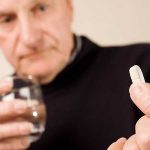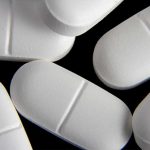- Vicodin Withdrawal Syndrome
- Vicodin Withdrawal Symptoms
- Vicodin Withdrawal Timeline
- Detox & Vicodin Withdrawal
Vicodin withdrawal symptoms include nausea, muscle aches, increased heart rate, insomnia, anxiety, and other symptoms. Withdrawal symptoms can start 8 hours after the last dose, and last for up to 20 days in a patient who is physically dependent on Vicodin.
Vicodin is a brand-name opioid painkiller. It is sold as a short-acting analgesic combined with acetaminophen, and a long-acting, extended-release pain reliever. Both versions have a high potential for substance abuse.
Vicodin Withdrawal Syndrome
Vicodin is a pain medication that is prescribed to manage severe pain, chronic pain, and other forms of pain. It binds to opioid receptors and causes feelings of sedation and pain relief.
After long-term Vicodin use, the body may develop a physical dependence to the drug, where it relies on Vicodin to maintain normalcy. Physical dependence leads patients to experience withdrawal symptoms after they stop taking Vicodin.
Patients take Vicodin for long periods of time, or patients who abuse Vicodin, may be at a higher risk of withdrawal.
Vicodin Withdrawal Symptoms
Mental and physical symptoms of Vicodin withdrawal include:
- nausea
- stomach cramps
- runny nose
- muscle aches
- increased heart rate
- goosebumps
- sleeping problems
- cold flashes
These withdrawal symptoms can range from mild to severe. Healthcare providers may use the Clinical Opiate Withdrawal Scale, or COWS, to assess the severity of a patient’s symptoms.
Vicodin Withdrawal Timeline
The withdrawal timeline of opioids depends on whether the opioid is short-acting or long-acting. Most forms of Vicodin are short-acting, but there is an extended-release formula that lasts longer.
Short-acting opioids tend to cause shorter withdrawal timelines, while long-acting opioids tend to cause longer ones.
First 8-24 Hours
8 hours after taking the last dose of Vicodin, mild withdrawal symptoms may occur. Extended-release Vicodin can lead to withdrawal symptoms 24 hours after the last dose. Mild symptoms may progress into severe symptoms as time goes on.
Severe withdrawal symptoms are more intense versions of mild withdrawal symptoms, and can include:
- vomiting
- diarrhea
- severe anxiety
- severe sweating
20+ Days
The acute withdrawal process for opioids lasts between 7 to 20 days on average. After 20 days, patients tend to enter a prolonged state of withdrawal, characterized by cravings and a general decline in physical and mental health.
Persistent cravings tend to lead many patients to relapse during post-acute withdrawal. With proper treatment and professional care, cravings can be managed to avoid a relapse.
Detox & Vicodin Withdrawal
Detoxification, or detox, is the process of cleansing the body of harmful substances. It is often the first step in substance use disorder treatment for habit-forming substances.
Detoxing from opioids like Vicodin is often done in a medical setting. Medically assisted detox allows patients to manage their withdrawal symptoms with constant supervision and assistance, avoiding potential health problems that can come from quitting “cold turkey.”
Medical detox assesses the patient’s health profile and history of drug use before assigning them a schedule. Detox from opioids may last as long as the patient shows withdrawal symptoms.
Treating Vicodin Addiction
After a successful detox, there are many treatment options available for patients recovering from Vicodin addiction and withdrawal. Methadone and buprenorphine are two prescription drugs effective in managing opioid cravings.
Patients may be recommended for cognitive behavioral therapy to learn how to cope when cravings appear. They may also attend support groups to learn how others cope with similar symptoms.
Treatment may be done at home in an outpatient setting, or in an inpatient setting for severe opioid cases.
To find out if our outpatient opioid addiction treatment program works for you or your loved one, please contact Northeast Addiction Treatment Centers today.
Sources
- National Institute on Drug Abuse — Clinical Opiate Withdrawal Scale
- National Library of Medicine: StatPearls — Opioid Withdrawal
- National Library of Medicine — Withdrawal Management - Clinical Guidelines for Withdrawal Management and Treatment of Drug Dependence in Closed Settings
- U.S. Food and Drug Administration — Vicodin
Written by
Northeast Addition Editorial Team
©2024 Northeast Addition Center | All Rights Reserved
This page does not provide medical advice.





